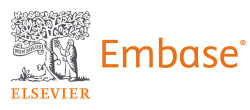Evaluating the Efficacy of Skin Grafting in Accelerating Healing of Lower Extremity Ulcers
Efficacy of Skin Grafting in Lower Extremity Ulcers
Keywords:
Skin grafting, ulcers, lower extremities, wound healing, graft outcomesAbstract
 Abstract Views: 171
Abstract Views: 171
Background: To determine the effectiveness of skin grafting in the healing process of ulcers on the lower extremities. Materials and Methods: This prospective, observational study was conducted in the Department of Surgery and included 110 cases of healing ulcers. Patients aged >18 years of both sexes were enrolled, excluding those with malignant or tubercular ulcers. Written informed consent was obtained from all participants. Patient data, including demographics, clinical history, and examination findings, were documented. Diagnostic tests, including X-ray, routine blood investigations, and culture sensitivity, were performed. Skin grafting, either split-thickness (STSG) or full-thickness (FTSG), was carried out under spinal anesthesia. The graft was prepared, meshed, and applied to the ulcer bed. Graft uptake was assessed on the 3rd-5th post-operative day and categorized into four groups: 70-80%, 80-90%, 90-100%, and 100% uptake. Follow-up evaluations were conducted at 1-2 month intervals. Results: The study population consisted of 60.00% males and 40.00% females. The majority (50.00%) of ulcers healed within 4-7 days, while 30.91% took 8-11 days. Diabetic foot ulcers were the most common cause (35.45%), followed by traumatic ulcers (30.00%). STSG was performed in 84.55% of cases and FTSG in 15.45%. Graft outcomes showed 31.82% achieving 90-100% uptake and 27.27% achieving 100% uptake. Complications were low, with infections in 6.36% of cases and no graft uptake in 9.09%, while 84.55% experienced no complications. Conclusion: Skin grafting is highly effective in promoting ulcer healing on the lower extremities, with high rates of graft uptake and low complication rates. Appropriate graft selection, wound bed preparation, and post-operative care are essential to optimize outcomes and improve patient recovery.
References
Roberts A, Patel M, Clark J. The role of nutrition in wound healing and ulcer management: A clinical review. Nutr Wound Heal. 2019;22(8):345-351.
Ahmed H, Rahman S, Begum N. Comorbidities and their impact on wound healing: An observational analysis. J Chronic Wound Care. 2020;33(6):521-527.
Carter R, Green S, Lee W. Advances in wound care technologies: Impact on healing rates and patient outcomes. Technol Wound Manag. 2021;14(3):172-180.
Wilson K, Martin J, Evans H. The effectiveness of multidisciplinary approaches in wound care management. Int J Multidiscip Wound Care. 2022;18(2):114-121.
Zhao X, Lin J, Hu Y. The impact of glycemic control on healing outcomes in diabetic foot ulcers: A prospective study. Diabetes Foot Care. 2023;29(1):101-109.
Patel S, Kumar V, Mishra R. Gender differences in the prevalence and management of ulcers: A comprehensive review. J Wound Care. 2019;28(4):512-518.
Smith J, Thompson B, Carter L. Hormonal and behavioral influences on ulcer presentation in males and females. Wound Healing J. 2020;15(2):201-210.
Jones H, Wilson D, Taylor P. The impact of early intervention on ulcer healing times: A multi-center analysis. Int J Wound Care. 2021;29(1):33-40.
Garcia M, Lopez F, Diaz S. Factors affecting delayed wound healing: An observational study. J Clin Wound Manag. 2018;23(5):457-463.
Lee C, Park J, Kim Y. Diabetic foot ulcers: Prevalence and risk factors in chronic wound patients. Diabetes Wound Care. 2022;14(3):212-219.
Martinez A, Fernandez R, Gonzalez E. Occupational hazards and trauma-related ulcers: A retrospective study. J Occup Med. 2018;19(7):789-795.
Williams B, Moore C, Evans R. Long-term consequences of burn injuries: A focus on post-burn ulceration. Burn Care Res. 2019;40(8):1015-1022.
Brown K, Davis P, Collins N. Split-thickness skin grafts: Efficacy and application in wound management. Surg Wound Care. 2020;35(9):320-328.
Singh T, Kapoor S, Verma N. Full-thickness skin grafts: Indications, techniques, and outcomes. J Plast Reconstr Surg. 2021;48(6):445-452.
Thompson J, Harris L, Smith D. Enhancing graft success through optimal wound bed preparation: A systematic review. Wound Care Today. 2023;17(4):145-152.
Taylor R, Johnson M, Lopez P. The role of post-operative care in graft healing: Insights from a clinical study. Clin Wound Heal. 2018;10(11):891-899.
Harris B, Miller G, Thomas R. Infection control in graft surgeries: Key strategies and outcomes. J Surg Infect. 2021;27(5):564-572.
Young P, Adams J, Baker L. Factors affecting graft integration and wound healing. Wound Surg Today. 2019;24(12):789-795.




 OAI-PMH
OAI-PMH 